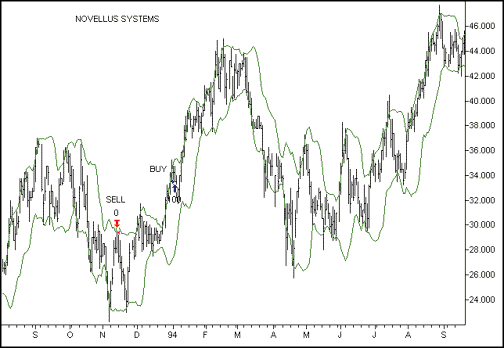Many software packages for technical analysis of the stock market contain volatility bands using standard deviations of prices (Bollinger bands, for example). The conventional application of Bollinger bands assumes that a stock is overbought as the price approaches the upper band, and that it is oversold as the price nears the lower band. By using overbought and oversold conditions, aggressive investors can countertrade frequently, expecting reversals of current short-term trends. Using volatility bands, we wanted to test a trend-following system trading outside the bands rather than a contrary system trading within.
With this in mind, we developed two mechanical trading rules using asymmetrical price volatility bands, one based on moving averages and total volatility and the other based on regression trendlines and unexplained volatility. We will explain these two concepts in greater detail shortly. Both systems assume that the breakout from a trading band based on recent volatility indicates that the trend will continue in the direction of the breakout. An uptrend begins as prices go above the resistance level of the upper band, while a downtrend begins as prices go below the support level of the lower band. Our systems buy and sell when these breakouts occur.
We compared the performance of our systems to the buy-and-hold strategy for one sample of stocks from November 17, 1989, to August 5, 1996, and for another sample of stocks from March 31, 1992, to March 29, 1996. The excess returns of the active strategies over the buy-and-hold strategy were 3.5% to 7% and statistically significant in every period. Both systems have a low turnover. By implementing the regression system, an individual investor or a portfolio manager with a low-turnover strategy could have turned $980,000 into $3.57 million, an annual compound return of 20.3% and trading an average of only three times per stock.
Various technicians have shown that the breakouts of trading bands and channels indicate strengthening trends. Likewise, our system, the moving average asymmetric volatility price bands (MAAVPB) system, uses the concept that trends become stronger as the stocks trade outside the bands for a few days. In MAAVPB, the upper band (lower band) is calculated by adding (deducting) the volatility to the moving average of prices. Widening bands indicate increasing volatility, while narrowing bands show that volatility is receding. The MAAVPB views the upper band as the resistance level and the lower band as the support level, and it does not trade within the bands.
